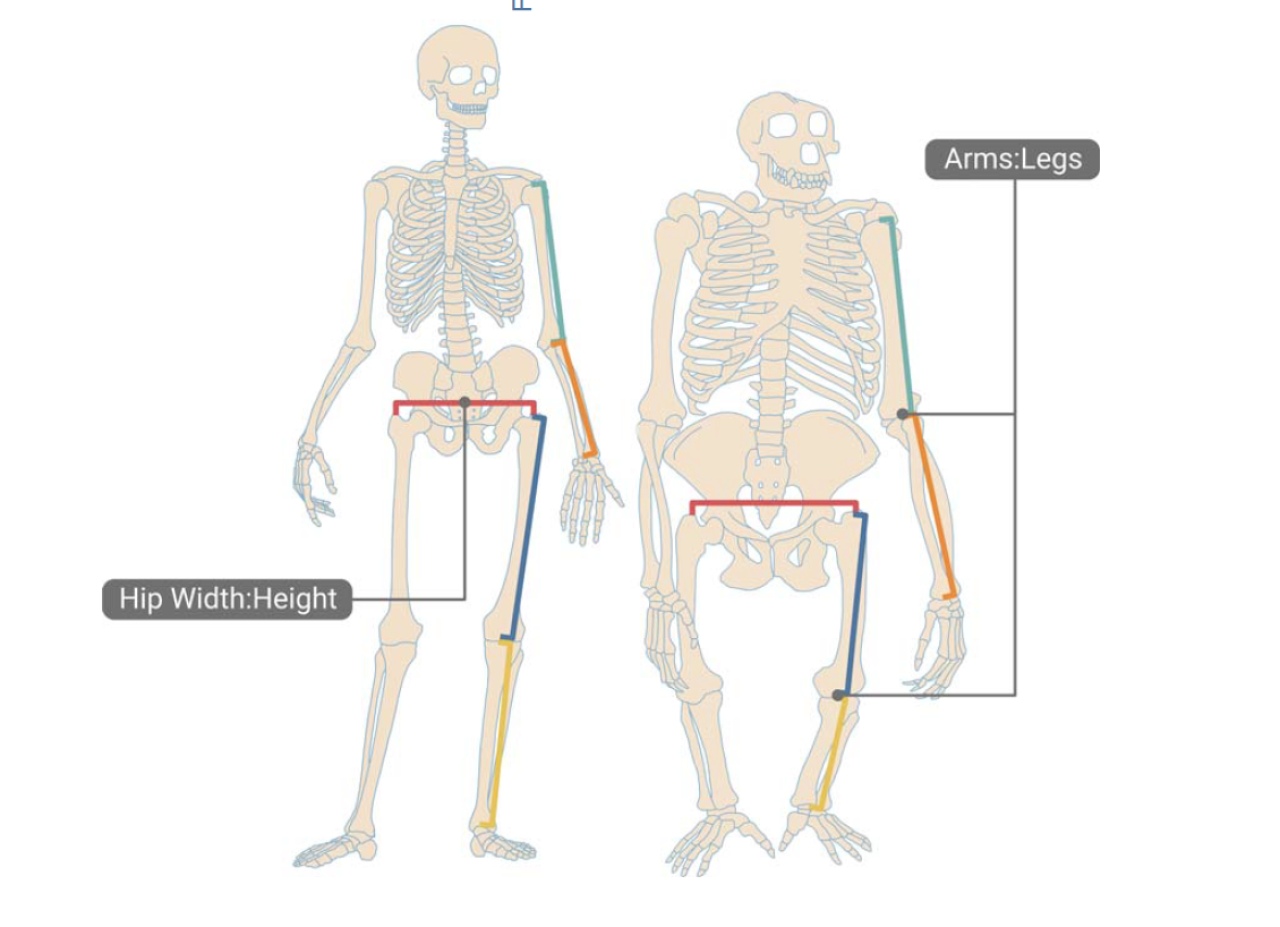Perhaps the most profound advance in primate evolution occurred about 6 million years ago when our ancestors started walking on two legs. The gradual shift to bipedal locomotion is thought to have made primates more adaptable to diverse environments and freed their hands to make use of tools, which in turn accelerated cognitive development. With those changes, the stage was set for modern humans.

Tarjinder Singh
The genetic changes that made possible the transition from knuckle-based scampering in great apes to upright walking in humans have now been uncovered in a new study by researchers at Columbia University and the University of Texas.
Using a combination of deep learning (a form of artificial intelligence) and genome-wide association studies, the researchers have created the first map of the genomic regions responsible for skeletal changes in primates that led to upright walking. The map reveals that genes that underlie the anatomical transitions observed in the fossil record were strongly acted on by natural selection and gave early humans an evolutionary advantage.
"On a more practical level, we've also identified genetic variants and skeletal features that are associated with hip, knee, and back arthritis, the leading causes of adult disability in the United States," says Tarjinder Singh, PhD, assistant professor of computational and statistical genomics (in psychiatry) at the Columbia University Vagelos College of Physicians and Surgeons and a co-leader of the study.
For example, slight deviations from the average hip width-to-height ratio were associated with an increased risk of hip osteoarthritis, while slight deviations in the tibia-femur angle were associated with an increased risk of knee osteoarthritis. These insights could help researchers devise new ways to prevent and treat these debilitating conditions.
The findings were published July 20 in Science. The study was co-led by Vagheesh M. Narasimhan, PhD, assistant professor of integrative biology and of statistics and data sciences at the University of Texas at Austin.

The researchers found that individuals with a higher ratio of hip width to height were more likely to develop hip osteoarthritis; people with a higher ratio of femur length to height were more likely to develop arthritis in the knees; and those with a higher ratio of torso length to height were more likely to develop back pain.
New techniques deployed
The researchers applied deep learning to analyze more than 30,000 full-body X-rays from the UK Biobank. Deep learning, a technology modeled after the brain's neural networks, trains computers to do what comes naturally to humans, such as driving a car or translating languages. In this case, the technique was used to standardize the X-rays, remove any images with quality issues, and then precisely measure dozens of skeletal features, tasks that would have taken the researchers months, if not years, to complete.
Next, the researchers scanned the human genome to identify chromosomal regions associated with variations in 23 key skeletal measures, such as shoulder width, torso length, and tibia-to-femur angle. (These scans, called genome-wide association studies, involve surveying the genomes of large groups of people, looking for genomic variants that occur more frequently in those with a specific disease or trait compared to those without the disease or trait.) This process revealed 145 regions associated with genes that regulate skeletal development. Only a handful of these loci were known from previous studies.
Many of the 145 regions overlapped with "accelerated" regions of the human genome, which have rapidly evolved over eons compared with the same regions in great apes. In contrast, few genes associated with the heart, immune system, metabolism, and other traits were found in accelerated regions.
"What we're seeing is the first genomic evidence that there was selective pressure on genetic variants that affect skeletal proportions, enabling a transition from knuckle-based walking to bipedalism," says Narasimhan.
The study also shows the power of combining large-scale biobank data, machine learning, and genomics to help us understand human health and disease. Singh, who joined Columbia in 2022, is now applying these techniques to understand the causes of mental illness.
References
More information
Tarjinder Singh, PhD, is also an associate member of the New York Genome Center.
The paper is titled "The genetic architecture and evolution of the human skeletal form."
The other contributors are Eucharist Kun (University of Texas at Austin), Emily M. Javan (Texas), Olivia Smith (Texas), Faris Gulamali (Icahn School of Medicine at Mount Sinai, New York), Javier de la Fuente (Texas), Brianna I. Flynn (Texas), Kushal Vajrala (Texas), Zoe Trutner (Texas), Prakash Jayakumar (Texas), Elliot M. Tucker-Drob (Texas), and Mashaal Sohail (Universidad Nacional Autónoma de México, Cuernavaca).
The study was supported by the Allen Discovery Center program and a Good Systems for Ethical AI grant from the University of Texas at Austin.
The authors declare no competing interests.






